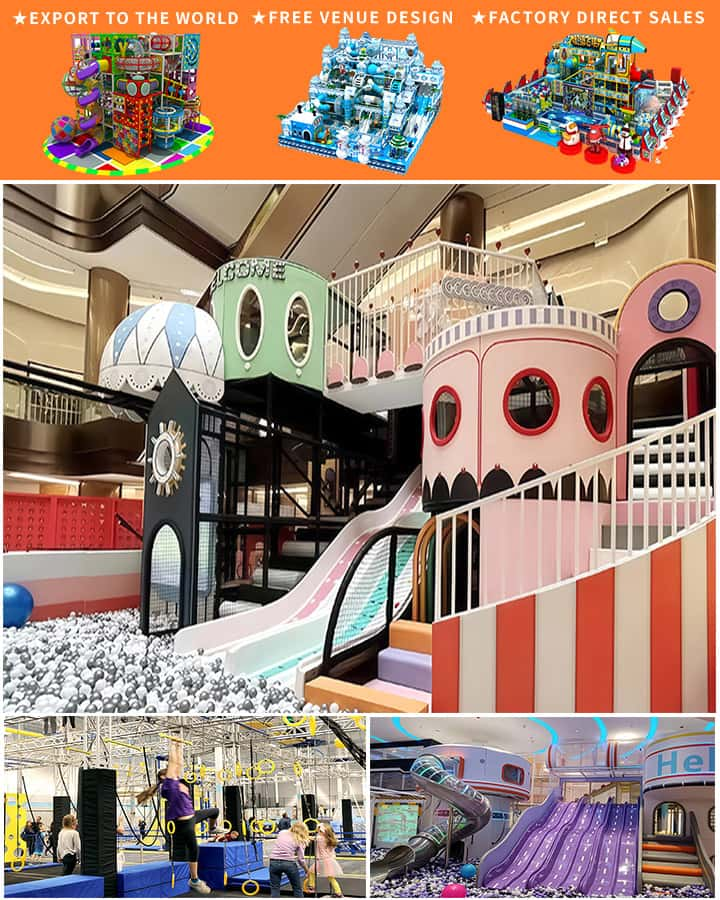In recent years, indoor playgrounds have become a popular destination for families looking to engage children in fun and active play, regardless of weather conditions. These facilities offer a safe environment where kids can explore, learn, and burn off energy. However, setting up an indoor playground involves significant investment. Understanding the various costs associated with establishing and maintaining one can help potential owners make informed decisions.
Initial Setup Costs
Location and Leasing Expenses Choosing the right location is crucial for the success of an indoor playground. Prime locations such as shopping malls or busy commercial areas are ideal but come at a premium. Leasing costs can vary widely depending on the region, size of the space, and the terms of the lease. Typically, expect to budget anywhere from \(5,000 to \)20,000 per month for a decent-sized facility.
Building Renovation and Construction The physical setup of the playground requires substantial investment. This includes renovation of the chosen space to accommodate play structures, safety flooring, restrooms, and other essential amenities. Depending on the scale and complexity, construction costs can range from $50,000 to several hundred thousand dollars.
Play Equipment Procurement
 High-quality play equipment forms the backbone of any indoor playground. Investing in durable and safe equipment not only ensures customer satisfaction but also compliance with safety standards. Soft play structures, slides, ball pits, trampolines, and climbing frames can cost between \(10,000 and \)50,000, depending on the variety and quantity of equipment purchased.
High-quality play equipment forms the backbone of any indoor playground. Investing in durable and safe equipment not only ensures customer satisfaction but also compliance with safety standards. Soft play structures, slides, ball pits, trampolines, and climbing frames can cost between \(10,000 and \)50,000, depending on the variety and quantity of equipment purchased.Licensing and Permits Obtaining the necessary licenses and permits is another unavoidable expense. This includes business permits, health and safety inspections, fire department approvals, and zoning permits. Fees can add up to several thousand dollars, varying by local regulations.
Operational Costs
Staff Salaries Employing reliable and friendly staff is essential for the smooth operation of an indoor playground. This includes attendants to supervise play areas, cashiers, cleaners, and maintenance personnel. Depending on wage rates in your area and the number of employees, monthly salaries could range from \(10,000 to \)30,000.
Maintenance and Repairs Regular maintenance is required to ensure the safety and longevity of the playground equipment. Routine checks, cleaning, and occasional repairs can amount to ongoing costs between \(500 and \)3,000 per month.
Utilities and Insurance Utility expenses, including electricity, water, heating, and cooling, should be factored into the budget. Monthly utility bills can range from \(500 to \)2,000 depending on the size of the facility. Additionally, securing comprehensive insurance coverage for liability and property damage is imperative, which might set you back an additional \(1,000 to \)3,000 annually.
Marketing and Promotion Attracting customers through effective marketing strategies is crucial for profitability. Budget allocation for online marketing, flyers, social media advertising, and local promotions can range from \(500 to \)2,500 per month.
Financial Planning and Breakeven Analysis
Creating a detailed financial plan is critical. Potential owners should conduct a thorough breakeven analysis, considering all fixed and variable costs. On average, it may take one to three years to reach the breakeven point, after which profits can be anticipated. Diversifying revenue streams through birthday party hosting, membership plans, and merchandise sales can accelerate profitability.
Conclusion
Setting up an indoor playground involves considerable financial investment and meticulous planning. By understanding the comprehensive costs involved—from initial setup expenses to operational expenditures—potential owners can strategically plan their venture. While the initial outlay may seem daunting, a well-run indoor playground can provide a fulfilling business opportunity with strong returns over time.




